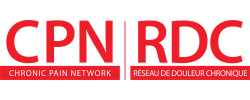| Return |
Patient Evidence Summary

Doctor, I have shoulder hand syndrome. Will adding acupuncture to my rehabilitation therapy help improve my symptoms?
Acupuncture may help in managing chronic pain, arm function, and daily activities in stroke patients.
What is the evidence?
Researchers looked at patients with shoulder hand syndrome who received a combined therapy (acupuncture plus rehabilitation therapy) and compared them to patients who only received rehabilitation therapy. They measured pain, upper limb function, and ability to perform daily activities. They found that:
- Patients who had the combined therapy had less pain up to 30 days after treatment
- Patients who had the combined therapy had better upper limb function up to 40 days after treatment
- Patients who had the combined therapy were better able to perform their daily activities up to 30 days after treatment
What kind of study was this?
Who participated in the study? This review included 20 studies involving 1,918 people who had shoulder hand syndrome without complications after a stroke.
How was the study done? The reviewers included studies that compared acupuncture plus rehabilitation therapy with rehabilitation therapy alone.
Acupuncture plus rehabilitation | vs | Rehabilitation alone |
|---|---|---|
Acupuncture treatment included manual stimulation for 15-40 minutes approximately once per day for up to 40 days. Rehabilitation therapy included passive movement, active movement, joint movement, Bobath therapy, and sometimes occupational therapy. Sessions were 1-2 times per day, every 1-2 days, for up to 40 days.] | Rehabilitation therapy included passive movement, active movement, joint movement, Bobath therapy, and sometimes occupational therapy. Sessions were 1-2 times per day, every 1-2 days, for up to 40 days. |
Why was this research done?
Shoulder hand syndrome is a common complication of stroke. Patients often experience pain and restricted flexibility in the shoulder and hand. There is no specific treatment that consistently works for shoulder hand syndrome. Acupuncture is often used as a treatment for shoulder hand syndrome in China. This review summarized the published evidence for combining acupuncture with rehabilitation therapy for shoulder hand syndrome.
This Evidence Summary is based on the following article:
Peng L, Zhang C, Zhou L, et al. Traditional manual acupuncture combined with rehabilitation therapy for shoulder hand syndrome after stroke within the Chinese healthcare system: a systematic review and meta-analysis. Clin Rehabil. 2018 Apr;32(4):429-439. doi: 10.1177/0269215517729528. Epub 2017 Sep 13. PubMed
Published: Friday, December 21, 2018
Please note that the information contained herein is not to be interpreted as an alternative to medical advice from a professional healthcare provider. If you have any questions about any medical matter, you should consult your professional healthcare providers, and should never delay seeking medical advice, disregard medical advice or discontinue medication based on information provided here.
|
This Evidence Summary was printed from the PAIN+ CPN website on 2025/04/01. To view other Evidence Summaries or to register to receive email notifications about new Evidence Summaries, please visit us at https://www.painpluscpn.ca/Articles/EvidenceSummaries |

|






 , McMaster University
, McMaster University